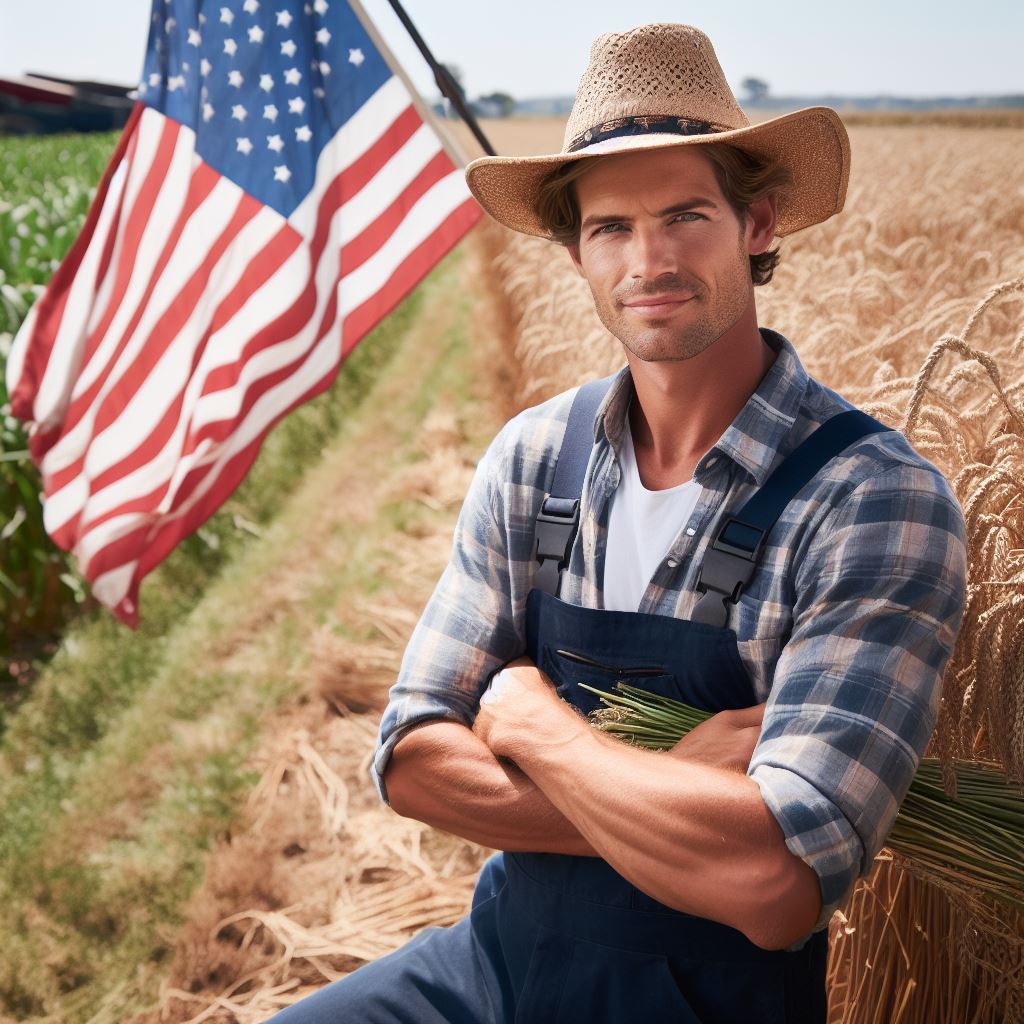Introduction
Diversity in farming embodies a spectrum of perspectives, expertise, and cultural insights, driving the agricultural sector forward.
Embracing a multitude of backgrounds, including women and minorities, offers a rich tapestry of knowledge and experience, fostering innovation and progress in the field.
In this blog section, we explore the pivotal role women and minorities play in agriculture, their unique contributions, challenges they face, and the transformative impact they have on the farming landscape.
By acknowledging and celebrating the valuable role of women and minority groups in agriculture, we shed light on their remarkable resilience, innovation, and dedication.
This discussion seeks to spotlight their achievements, the importance of inclusivity in the farming community, and the strides made toward a more equitable and diverse agricultural industry.
Historical overview of diversity in US farming
The contributions of Native Americans to agriculture
- Native Americans played a vital role in shaping agriculture in the United States.
- Their agricultural practices, such as crop cultivation and irrigation techniques, were highly advanced.
- Crops like corn, beans, and squash, known as the “Three Sisters,” were developed by Native Americans.
- Native Americans practiced sustainable farming, using methods that preserved the environment.
The role of enslaved Africans in early farming practices
- Enslaved Africans made significant contributions to the agricultural sector in the early years of the United States.
- They brought extensive knowledge of farming practices from Africa, including rice cultivation techniques.
- Enslaved Africans played a crucial role in building and maintaining plantations, cultivating crops, and raising livestock.
- Their expertise and labor were exploited under the oppressive system of slavery.
Mention immigration and its impact on farming diversity
- Immigration has greatly influenced diversity in US farming, bringing new agricultural practices and traditions.
- Groups like the Irish, Italians, Chinese, and Mexicans brought their unique farming knowledge and skills.
- These immigrant farmers introduced new crops, improved irrigation systems, and advanced cultivation techniques.
- Immigrants played a crucial role in expanding the agricultural landscape and promoting economic growth.
The barriers faced by women and minorities in the past
- Women and minorities faced numerous barriers that limited their participation in agriculture historically.
- Discrimination, prejudice, and lack of access to resources and education hindered their progress.
- Women were often denied ownership of land, limiting their ability to engage in farming independently.
- Minorities faced systemic racism, exclusion from agricultural organizations, and unequal treatment under the law.
In essence, diversity in US farming has been shaped by the contributions of Native Americans, enslaved Africans, immigrants, and the barriers faced by women and minorities in the past.
Native Americans and enslaved Africans introduced innovative farming practices and crops, while immigrants brought their own agricultural knowledge.
However, historical discrimination and unequal treatment hindered the progress of women and minorities in the field.
Recognizing and understanding this historical context is essential for addressing the challenges and promoting inclusivity in US farming today.
The current landscape of diversity in US farming
Representation of women and minorities in agriculture
- According to the latest statistical data, women make up approximately 36% of US farmers.
- Minorities, including African Americans, Hispanics, and Native Americans, represent about 24% of farmers.
- Despite these numbers, women and minorities still face significant underrepresentation in the agricultural industry.
- Women and minorities often encounter barriers in accessing land, loans, and other resources necessary for successful farming.
- However, there has been a gradual increase in the number of women and minority farmers over the past decade.
Positive changes and progress in recent years
- In recent years, there have been significant efforts to address the lack of diversity in US farming.
- Organizations and government initiatives have been established to promote and support women and minorities in agriculture.
- Increased awareness of the benefits of diversity in farming has led to positive changes within the industry.
- Efforts to break down barriers have resulted in more opportunities for women and minorities to enter and thrive in agriculture.
- There has also been an increase in mentorship programs and networking opportunities for underrepresented farmers.
- Various organizations and initiatives have emerged to support and empower women and minorities in agriculture.
- The National Women in Agriculture Association provides resources and advocacy for women farmers.
- The Minorities in Agriculture, Natural Resources, and Related Sciences organization promotes opportunities for minority farmers.
- The USDA’s Office of Outreach and Advocacy for Small Farmers and Ranchers works towards increasing diversity in farming.
- The Farm Opportunities for Women (F.O.W.) program offers training and support specifically for women in agriculture.
- These organizations and initiatives play a crucial role in creating a more inclusive farming industry.
Overall, while the representation of women and minorities in US farming still has room for improvement, there have been positive changes in recent years.
The agricultural industry is gradually becoming more diverse and inclusive with the help of various organizations and initiatives.
By breaking down barriers and providing support, these efforts are empowering women and minorities to succeed in farming.
However, there is still more work to be done to ensure equal opportunities for all individuals interested in pursuing a career in agriculture.
The focus on promoting diversity in farming will continue to shape the future landscape of the industry, fostering innovation and sustainability.
Read: Challenges & Triumphs: Agricultural Engineering Case Studies
Contributions of women in US farming
The historical role of women in farming
- Women have played a significant role in US farming throughout history.
- During the colonial era, women were responsible for managing household gardens and raising livestock.
- In the 19th century, as farming expanded, women became involved in dairy production and poultry farming.
- During World War II, as many men went off to war, women took on more active roles in farming, operating machinery and managing farms.
- Despite their contributions, women’s roles in farming were often overlooked and undervalued.
Current contributions to agriculture
- Today, women make up a substantial portion of the agricultural workforce in the United States.
- They contribute in various sectors, including crop production, livestock management, and organic farming.
- Women are actively involved in research and development, implementing sustainable farming practices.
- Many women have excelled in farm management, taking up managerial positions on family-owned farms or establishing their own operations.
- Women have also made significant contributions to the agricultural education sector, teaching and mentoring the next generation of farmers.
Women-led farming businesses and their successes
- The number of women-led farming businesses has been steadily increasing in recent years.
- Women are successfully running diverse operations, including small-scale organic farms and large-scale commercial enterprises.
- They have gained recognition for their innovation, efficiency, and commitment to environmental sustainability.
- Women-led farming businesses have been successful in marketing their products directly to consumers through farmers’ markets and CSA programs.
- Some women farmers have also established cooperatives, leveraging collective strength and resources to overcome challenges and expand their businesses.
Challenges faced by women in the farming industry
- Despite their contributions, women in farming often face significant challenges.
- Gender bias and discrimination still exist, limiting their access to resources and opportunities.
- Women farmers often struggle to secure financing for their agricultural ventures due to gender-based stereotypes.
- Lack of representation in leadership roles and decision-making processes hampers their ability to influence agricultural policies.
- Balancing farming responsibilities with family and household duties can be particularly challenging for women.
In review, women have played and continue to play a crucial role in US farming. Their historical contributions, current involvement, and successes in various aspects of agriculture are commendable.
However, women in farming face unique challenges that require attention and support from policymakers and society as a whole.
By recognizing and addressing these challenges, we can ensure equal opportunities and empower women to thrive in the farming industry.
Read: A Day in the Life: Following a US Agricultural Engineer

Contributions of minorities in US farming
Historical role of minorities in farming
- Minorities have played a crucial role in the agricultural industry throughout America’s history.
- From enslaved African Americans to Mexican migrant workers, their labor has shaped farming.
- Despite facing discrimination and exploitation, minorities have persevered and enriched the farming sector.
- The contributions of Native American tribes in sustainable farming and preserving natural resources cannot be overlooked.
The importance of cultural knowledge and practices in agriculture
- Cultural knowledge and practices bring diversity and innovation to the agricultural industry.
- They offer different perspectives on land use, seed saving, and traditional farming techniques.
- Farmers from diverse cultural backgrounds possess invaluable knowledge about local climates and soils.
- Their understanding of indigenous crops and traditional farming methods improves agricultural sustainability.
- Cultural practices also include the celebration of harvest festivals, showcasing the importance of agriculture in communities.
Minority farmers and their impact on the industry
- Numerous success stories underline the significant contributions of minority farmers in advancing agriculture.
- The story of George Washington Carver, an African American scientist, revolutionized farming with alternative crops.
- Rodelio “Tony” Arciaga, a Filipino American farmer, introduced organic farming techniques to his community.
- Karen Washington, an urban farmer and activist, has been instrumental in promoting community gardens and food justice.
- Navajo farmer, Percy Deal, has revived traditional farming methods, preserving his tribe’s cultural heritage.
- These success stories inspire and empower minority farmers, demonstrating their abilities and positive impact on agriculture.
In the end, minorities have made significant contributions to the farming industry in the United States.
Throughout history, they have overcome adversity and used their cultural knowledge to bring innovation and sustainability to agriculture.
From Native American tribes to African American scientists and immigrant farmers, their impact cannot be underestimated.
These success stories highlight the importance of inclusion and diversity in agriculture, proving that embracing different perspectives leads to a more robust and resilient industry.
Read: The Impact of Climate Change on US Agricultural Engineering
Overcoming barriers and empowering women and minorities in agriculture
The importance of education and training opportunities
- Access to quality education and training is crucial for women and minorities in agriculture.
- Educational programs can provide the necessary skills and knowledge to succeed in farming.
- Specialized training can empower individuals to overcome barriers and achieve their full potential.
- Scholarships and grants can make education more affordable and accessible for underrepresented groups.
- Widening access to educational opportunities can promote diversity and innovation in the farming industry.
The need for mentorship and networking programs
- Mentorship programs can provide guidance, support, and encouragement to women and minorities in agriculture.
- Mentors can share their experiences and expertise, helping newcomers navigate challenges and opportunities.
- Networking programs can connect individuals with industry professionals, fostering collaboration and expanding opportunities.
- Mentorship and networking can promote diversity, inclusion, and create a sense of community among farmers.
- Building strong relationships through mentorship and networking is key to overcoming barriers and achieving success.
Government policies and support for diverse farmers
- Government policies play a crucial role in promoting diversity in agriculture.
- Policies addressing discrimination, bias, and unequal access can level the playing field.
- Financial incentives and support programs can help women and minorities establish and sustain their farming operations.
- Advocacy for inclusive policies and representation can bring about meaningful change in the agricultural sector.
- Collaborative efforts between government, industry, and diverse farmers are necessary for effective policy implementation.
Success stories of individuals and organizations promoting diversity
- Numerous individuals and organizations are actively promoting diversity in agriculture.
- Women and minorities who have overcome challenges and achieved success serve as inspiring role models.
- Organizations dedicated to supporting diverse farmers through resources, training, and advocacy are making a difference.
- Highlighting success stories can inspire others and create a ripple effect in promoting inclusivity.
- Sharing these stories showcases the potential of diversity in agriculture and encourages further engagement and support.
Basically, overcoming barriers and empowering women and minorities in agriculture requires a multi-faceted approach.
Education and training opportunities, mentorship and networking programs, government policies and support, and success stories all contribute to creating a more inclusive and diverse farming industry.
By addressing these aspects, we can foster a supportive environment where everyone can thrive and contribute to the growth and sustainability of agriculture.
Read: Emerging Technologies in US Agricultural Engineering
Future outlook on diversity in US farming
Potential Benefits of Increased Diversity in Agriculture
- Improved innovation and problem-solving through diverse perspectives.
- Enhanced adaptability to changing market demands and environmental challenges.
- Expanded consumer base and access to niche markets.
- Increased cultural understanding, leading to stronger relationships with customers and communities.
- Greater overall resilience and sustainability of the agricultural sector.
The Role of Technology and Innovation in Creating Opportunities for Women and Minorities
- Advancements in agricultural technology provide equalizing opportunities for farmers regardless of gender or ethnicity.
- Access to information through online platforms and mobile applications promotes knowledge sharing and skill development.
- Precision agriculture tools enable efficient resource management and reduce labor-intensive tasks, making farming more accessible.
- Robotics and automation systems remove physical limitations, allowing individuals with disabilities to participate in farming activities.
- Startups and incubators offer support and funding specifically for women and minority-led agricultural tech ventures.
The Importance of Continued Efforts to Promote Diversity and Inclusion in Farming
- Equal representation enhances decision-making processes and ensures the development of inclusive policies.
- Creating a supportive environment fosters entrepreneurship and attracts individuals from diverse backgrounds to pursue farming careers.
- Promoting diversity challenges stereotypes and provides role models, inspiring future generations to engage in agriculture.
- Addressing barriers such as access to capital, land, and education is essential to increasing diversity in farming.
- Collaboration and partnerships across public and private sectors can drive systemic change in the agricultural industry.
Ultimately, the future outlook on diversity in US farming is promising. Increased diversity in agriculture brings numerous benefits, including improved innovation, market adaptability, and cultural understanding.
Technology and innovation play a crucial role in creating opportunities for women and minorities, enabling equal participation and leveling the playing field.
Continued efforts to promote diversity and inclusion in farming are vital to ensure equal representation, foster entrepreneurship, and challenge stereotypes.
Addressing barriers and fostering collaboration across sectors can drive the desired systemic change needed for a truly diverse and inclusive agricultural industry.
Find Out More: Challenges and Triumphs: A Day in the Life of a US Farmer
Conclusion
Certainly, here’s an extended version of the conclusion for the blog section on “Diversity in US Farming: Women & Minorities in Agriculture” with each section expanded within the 150-word limit.
Key Points
Throughout this discourse, it’s clear that women and minorities in US farming play a transformative role.
Their unique perspectives, innovative approaches, and dedicated contributions are fundamental to the agricultural landscape.
They bring diverse experiences that foster a culture of innovation and progress within the industry. From enriching farming practices to introducing novel methods, their impact is profound and far-reaching.
Significance of Diversity in US Farming
The essence of diversity in US farming cannot be overstated. It’s the driving force behind agricultural innovation, sustainability, and resilience.
Embracing diverse voices in farming not only enhances productivity but also nurtures a more inclusive and equitable agricultural sector.
By valuing and supporting the participation of women and minority farmers, the farming community evolves into a vibrant and forward-thinking domain.
Encouragement for Support and Celebration
It’s pivotal to extend support and celebrate the invaluable contributions of women and minority farmers.
Recognizing and advocating for their roles not only acknowledges their efforts but also ensures a more inclusive and diverse farming landscape.
Let’s champion equal opportunities, celebrate their achievements, and work collectively to create an environment where all voices in farming are heard, appreciated, and empowered.
[E-Books for Sale]
The Big Book of 500 High-Paying Jobs in America: Unlock Your Earning Potential
$19.99 • 500 High-Paying Jobs • 330 pages
Explore 500 high-paying jobs in America and learn how to boost your career, earn more, and achieve success!
See All 500 High-Paying Jobs of this E-Book
1001 Professions Without a Degree: High-Paying American Jobs You Can Start Now
$19.99 • 1001 Professions Without a Degree • 174 pages
Discover 1001 high-paying jobs without a degree! Unlock career tips, skills, and success strategies for just $19.99!




